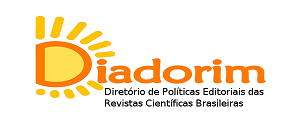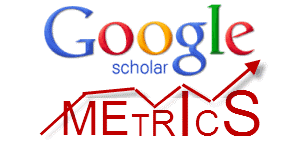URBAN PARKS
FORM, FUNCTION, STRUCTURE, PROCESS, AND THEIR POTENTIAL FOR TEACHING GEOGRAPHY
DOI:
https://doi.org/10.20873/rtg.v13i29.17084Keywords:
Urban Parks, Analytical Categories, Physical-Natural and Social Components, Teaching of GeographyAbstract
This article emerges from the desire for a study that addresses Geography Education in Basic Education, taking into consideration the geographical potential of an urban park, with an analysis of these spaces through their form, function, structure, and process, which, when considered together, build a theoretical and methodological foundation from which it is possible to discuss spatial phenomena in their entirety, as stated by Santos (1985). The article aims to present reflections on urban parks as a territorial focus, as well as to argue about possibilities for teaching Geography in urban parks, considering these places to have great geographical potential for the teaching and learning process through the relationship between physical-natural and social components, starting from the experiences of the students, which can be explored (these parks) through languages, strategies, and techniques (such as photographs, videos, iconographic questionnaires), which can be employed throughout the educational process of the theoretical-methodological proposal, for instance, during fieldwork. Physical-natural components are considered to be all the elements that make up the geographical space, which originated and developed in nature without depending on social relations. The social components are conceived as those arising from the social interactions of human beings, which produce and act culturally, economically, and politically.
References
ARENDT, Hannah. A condição humana. Rio de Janeiro: Forense-Universitária; Rio de Janeiro: Salamandra; São Paulo: Ed. Universidade de São Paulo, 1981.
CORRÊA, Roberto Lobato. Processo, forma e significado: uma breve consideração. In: INSTITUTO HISTÓRICO E GEOGRÁFICO DO RIO GRANDE DO SUL, 2009. Disponível em: http://ihgrgs.org.br/artigos/contibuicoes/Roberto%20Lobato%20Corr%C3%AAa%20-%20Processo,%20Forma%20e%20Significado.pdf. Acesso em: 5 set. 2021.
GOMES, Marcos Antônio Silvestre. Os Parques e a Produção do Espaço Urbano. Jundiaí, SP: Paco Editorial, 2013.
GOMES, Paulo César da Costa. Espaço público, Espaços públicos. GEOgraphia, v. 20, n. 44, p. 115-119, 2018. Disponível em: https://doi.org/10.22409/GEOgraphia2018.v1i44.a27557. Acesso em: 9 jul. 2021.
HABERMAS, Jürgen. Mudança estrutural da esfera pública: investigações quanto a uma categoria da sociedade burguesa. Rio de Janeiro: Tempo Brasileiro, 1984.
KLIASS, Rosa Grena. Parques urbanos de São Paulo e sua evolução na cidade. São Paulo: Pini, 1993.
LIMA, Ana Maria Liner Pereira; CAVALHEIRO, Felisberto; NUSSI, João Carlos; SOUSA, Maria Alice de Lourdes Bueno; FIALHO, Nilva de Oliveira; PICCHIA, Paulo Celso Dornelles Del. Problemas de utilização na conceituação de termos como espaços livres, áreas verdes e correlatos. In: Encontro Nacional sobre Arborização Urbana, 5., 1994, São Luís. Anais..., 1995. p. 539-553.
MACEDO, Sílvio Soares; SAKATA, Francine Gramacho. Parques Urbanos no Brasil. São Paulo: Editora da Universidade de São Paulo, 2003.
SAKATA, Francine Gramacho. Parques Urbanos no Brasil - 2000 a 2017. 2018. 348p. Tese (Doutorado - Arquitetura e Urbanismo) - Universidade de São Paulo, 2018.
SANTOS, Milton. Estrutura, Processo, Função e Forma como Categorias do Método Geográfico. In: SANTOS, Milton. Espaço e Método. São Paulo: Nobel, 1985.
SANTOS, Milton. Espaço e Método. 3. ed. São Paulo: Livros Studio Nobel, 1992. 88p.
SANTOS, Milton. A natureza do espaço. Técnica e tempo. Razão e emoção. São Paulo: Hucitec, 2002. 259p.
SERPA, Ângelo. O Espaço Público na Cidade Contemporânea. São Paulo: Editora Contexto, 2007.
STRAFORINI, Rafael. A Totalidade-mundo nas primeiras séries do Ensino Fundamental: um desafio a ser enfrentado. Terra Livre, [S. l.], v. 1, n. 18, 2015. Disponível em: https://publicacoes.agb.org.br/terralivre/article/view/203. Acesso em: 6 jun. 2023.
Downloads
Published
How to Cite
Issue
Section
License
Copyright (c) 2023 Tocantinense Journal of Geography

This work is licensed under a Creative Commons Attribution-NonCommercial-NoDerivatives 4.0 International License.
Revista Tocantinense de Geografia does not remunerate any author for the publication of their texts. The contents of the texts published in this journal are the responsibility of the authors.




.png)












